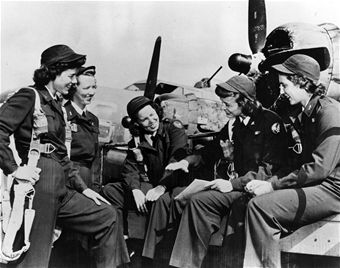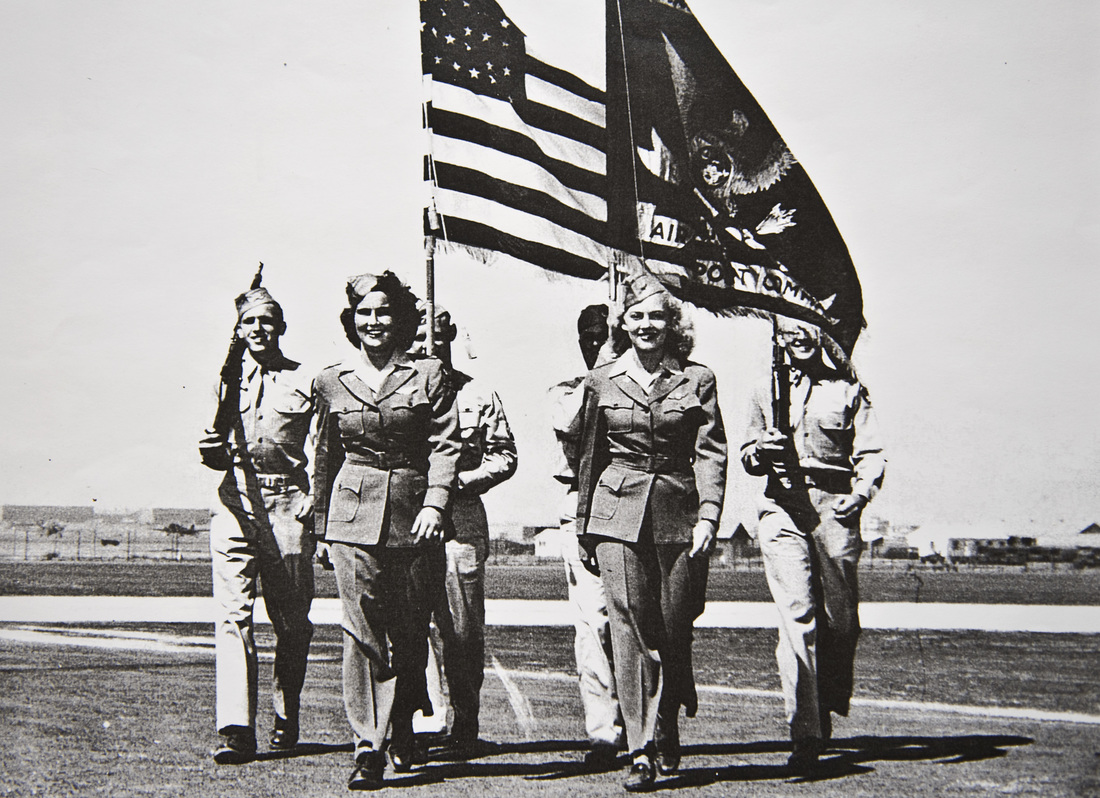
Barbara Erickson (front left) and Betty Tackaberry (front right) at March Army Air Base, Riverside, California, 1943, Courtesy of Airman


Barbara Erickson (front left) and Betty Tackaberry (front right) at March Army Air Base, Riverside, California, 1943, Courtesy of Airman

Courtesy of Wings Across America

Courtesy of Joint Base Langley-Eustis
The WASPs were the first women military pilots, stationed at over 100 bases, logging over sixty million miles, and flying over 70 types of aircraft in World War II. Women in the WASP program did every type of non-combat job the Air Force had to offer including testing planes, towing targets for anti-aircraft gunnery practice (with live ammunition), teaching male pilots, ferrying planes, flying and testing aircraft reported to have problems, performing check flights on repaired planes, breaking in new engines, simulating missions, towing gliders, and more.
“Like most loyal Americans during World War II, I wanted to do my part for the war effort. I loved flying and I could scarcely believe my good luck in being able to do something I loved so much for the good of my country. Flying out of Avenger Field, Texas it was hot, we were tired, and we were sticky half the time. But we were having a ball because we had those airplanes. We all loved to fly.” -Caro Bosca, WASP
These women didn’t just do all the easy work, they encountered the same rigorous training as their male counterparts. WASPs had to study everything, including physical training, math, physics, weather, map reading, charts, navigation, engines, code, and communications. These women pilots received men’s flying suits, called “zoot suits,” which were many sizes too big. Some women were even chosen to fly the gigantic B-29 Superfortress to different bases around the U.S. to show intimidated male pilots it could be done.
“The WASP, like any women in wartime America, yearned to do something meaningful to help the war effort. The unprecedented opportunity for these women to fly military aircraft for their country gave pilots a unique sense of pride and purpose, and they welcomed the chance to do their part for Uncle Sam.” -Amy Goodpaster Strebe, The American and Soviet Women Pilots of World War II
Denied all military benefits, this group of women was only considered a civilian unit. Thirty eight pilots gave their lives for their country, but the government refused to pay to send their bodies home. They were sent home at the expense of their families. Sometimes their fellow WASPs helped out. Although these women served their country, WASPs were not granted veteran status until over 30 years after their service.
“My biggest worry was passing the check rides which we had routinely during our six months training. About one third of each class washed out, some of them good pilots, and it was stressful.” -Lucile Wise, WASP, personal interview
Roll Out the Airplanes - WASP Marching Song - Nancy Parrish & KKG Singers
Header Image: Header Image: National WASP WWII Museum, Sweetwater, TX